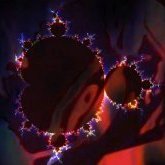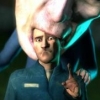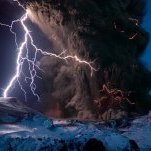Search the Community
Showing results for tags 'odium'.
-
If Odium was able to splinter a shard, just how powerful was he? Wouldn't saved be able to easily destroy Odium, since he is Preserving people and yet he is Ruining Odium, and thus the intents are in Harmony? Seriously, I have no idea and all y'all are smarter then me so I'm interested in what you have to say.
-
Preservation is an infinity, a note held for eternity. Ruin is intelligent decay. Honor is the protection of the weak, perhaps. Cultivation is the progression of things, maybe. Speculative Intents aside, what about Odium? We can sort of tell from the magic systems and occasionally WoB's what the intents actually are. Odium...hatred. Why does he destroy Shards?
-
I actually have several different theory's on why odium is stronger than other shards. A. Odium takes up tiny splinters of other shards. B. Odium's holder has a personality the complements the shards intent. C. Odium's power is increased when people feel hate. D. Odium got power from a outside source/already had investure. E. Odium has more knowledge about shardic power. Reasons: A. Odium may take up small parts of other shards i.e. part of dominion that will increase his power but not change his intent to something "good" for example a small part of dominion would increase his power but not change his intent. B. A shards power might be increased if the shardholder's personality matched the shards intent. In the letter it said that Rayse was already hateful. C. Most people will feel hate at some point in their lives thus increasing Odium's power. This may also be why shardplanets have religious systems focused around that shard's intent i.e. Vorin religion focuses on honor/honor, the shin treat farmers like lords/cultivation, elantrians have many holy places/devotion, fjorden focuses on besting others/dominion, halladren focuses on endowing others/endowment, pathians focus on meditation/harmony this spreading of the shards intent may increase their power. D. Odium gained power from some unknown source/other shard or already had power from before the shattering. E. Odium didn't spend time creating species, terraforming planets, helping society because of this he had a lot more time to discover new abilities/find more power. Please give feedback/say what one you think is correct.
-
This is rather a lot of speculation. But I still think it is a fascinating idea. So I have mentioned earlier, I am pretty sure the way to splinter a shard is to have more investiture on hand than they do. So if one shard are more invested than another (for example, preservation being slightly more invested on scadrial than ruin), the more invested shard will eventually be able to splinter the less invested one. This is precisely how Ati killed Leras. This also explains why shards tend to fight indirectly (for example, the desolations and the heralds forming a kind of proxy war for odium and honor). How would this work on adolnasium? Not exactly sure, unless adolnasium invested so much in everything that people were able to overpower it. So anyway. We know that Rayse killed Tanavast. By the above reasoning, this means that honor would have to be more invested than odium. I predict that this piece of investiture honor did not have access to when being splintered by odium was the stormfather. I will pull the quote up later, but in WoR it says the stormfather fled when honor and odium fought. Perhaps this extra bit of power deserting Tanavast is what caused his death.
-
I am sorry this has been a bit too long incoming, but I asked a very interesting question in my Elantris leatherbound. The question was: "Is Odium aware of the weapon created by Adonalsium's opposition?" (You remember that Adonalsium's opposition made a weapon, right? Kay, cool.) The answer: (Yes.) Yeah that's terrifying Brandon. Thanks a bunch...
- 36 replies
-
16
-
There’s an interesting discussion on this thread about the Cognitive Realm structure of different Shardworlds. Scadrian cognitive objects are made from mists and resemble their Physical Realm form. Rosharan cognitive objects consist of glass beads. More strangely, the blueprint of each object is contained within a single bead, but the object itself holds no form until it snaps together with other beads. Why such an extreme difference? (I ignore Sel for now, since its “Cognitive bubble” – is that now a canonical term? – is in dangerous disarray. And we know little of Nalthis’s.) As FirstSelector points out in the cited thread, Adonalsium himself may be responsible for Shadesmar. Substantial Adonalsium residue may linger on Roshar, including in Shadesmar. But it’s difficult to form any theory about that. (Might Roshar’s fourth “more esoteric” magic system mentioned in the WoR AA involve Adonalsium’s investiture?) I’ll focus instead on the three Shards who subsequently invested in Roshar. We would expect Shadesmar and its beads to reflect the influence of the Shards’ investitures. Here’s my explanation for Shadesmar’s structure. Odium I think Odium is the reason each bead is self-contained. Odium is the lone wolf who doesn’t bond or play well with others. We believe that Nergaoul, the Unmade responsible for the Thrill, resides in the black sphere Gavilar gave to Szeth, essentially a glass bead. To me, it makes sense that an investiture that divides and corrodes will cause cognitive objects to separate themselves from one another into their own containers – if for no other reason than to shield themselves from Odium’s influence. (A thought: could seons have formed around Aons for the same reason once Odium visited Sel?) Honor Honor binds. His influence allows each bead to snap together with other beads to form a semblance of the first bead’s cognitive object. That's odd because it means other beads temporarily relinquish their ties to their own object. Yet we see this happen in WoR’s prologue, with Taln’s statue and Gavilar’s palace. Bead construction requires Stormlight and motivation. Cultivation I now believe that Cultivation’s mandate (intent) is Time. Cultivation’s investiture permits the visualization of a future goal achieved by time compression. The beads snap together instantly, after the visualization of the cognitive object occurs. Honor and Cultivation working together undo what Odium did, isolating each object into its own glass bead. Thoughts?
-
Rather than continue to derail this thread, I'm posting my hypothesis here. Thesis statement: Mr. Sanderson created Nightblood for the express purpose of having him eventually take up the Shard of Odium. My thoughts on the matter: Per WoB, we know Nightblood was made for Roshar, and Warbreaker was made as a way to introduce him, as an origin story. This implies he's really, really important. I would daresay it's appropriate to assume he'll prove pivotal. Nightblood eats Investiture. He can eat Breath, Stormlight, and apparently the Mists of Scadrial. His hunger is not to be underestimated. Much is made of Nightblood, and his lack of capacity to make moral judgements. His mind was expanded from "I am a sword" to sentience with a thousand Breaths, and he was Commanded to decide what is and is not evil. The problem arose because, expanded mind or not, he simply didn't have the equipment to decide for himself what is evil. This entire concept, while interesting, doesn't actually impact the book very much. Nightblood would be a terrible and powerful weapon even without this issue, so it doesn't do much to impact what happened to Shasharra or what might happen with Yesteel. I believe this will prove pivotal. An issue with Odium, per the Letter, is its Intent. He mentions that Ati was once nice, but the Intent of Ruin perverted him into something horribly dangerous, and suggests that the Intent of Odium is, if anything, worse. It seems that simply letting someone else take up the Shard is a short-term solution, at best. Combining it with another Intent might work better, but that's already been done. Per the notion of Chekhov's gun, don't put in something you don't intend to use. So, to what use could Nightblood's inability to understand "evil" come in? I propose that one day, he will take up Odium. I think his endless hunger for Investiture will eventually lead him to somehow be connected to something vital to Odium (I have a few ideas how this might happen) and that he will consume it all, until he is Odium and Rayse isn't. And then, I think he will have exactly as much capacity to understand Hatred as he currently does Evil. I also have one last point to make, though I'm basing less on this. We know that some of the people involved in Nightblood's creation knew of Shardblades and were deliberately trying to mimic one. This is very unclear, but it's just about possible that even in-universe, it's actually someone's intention to craft a weapon capable of taking a Shard by force from its holder. It does harken to Preservation's long-game. Let me re-state that this point is even more speculative than the rest of my thoughts, and I'm including it out of a sense of completeness. If this is proven wrong, specifically, I still stil my hypothesis can be thought of as possible. EDIT: We now have much-more-recent WoB that Vasher worldhopped as a young man. While it's still possible this minor aspect of my hypothesis has some basis, it seems presumptive that it does not. As stated initially, this should not impact the larger hypothesis. (Having trouble getting to the actual source on the AMA, but this link references the relevant quote) Before I get into the arguments people have made against my theory, I'm going to clarify something that seems to keep getting confused. I'm not saying that Nightblood will want to destroy Odium because he will see Odium as Evil. I bring up Nightblood's Command not for the content of the Command itself, but to point out that Nightblood is inherently incapable of understanding abstract concepts of morality. The specific Command itself, or for that matter Odium's specific Intent, are irrelevant. Please do not reply saying something along the lines of, "Nightblood won't kill Odium because Odium isn't evil." Nightblood killed a wall once. I'm pretty sure the wall wasn't evil, either. On the other thread there have been a few disagreements with my hypothesis, which I fully admit is so speculative it might as well be head!canon (to be clear, I'm not convinced myself that this will happen. It's just something I wonder about). The main one seems to be an assumption that the expansion of consciousness one gets from being a Shard will be enough for Nightblood to understand hatred. I disagree. First, Nightblood's mind was already expanded. He started, presumably, with the cognitive aspect of "I am a sword" and a thousand Breaths and a Command expanded his consciousness to that of a reasonably intelligent adult. The Command was even specifically crafted, by two people who presumably do understand evil, towards evil-centric things. And, being a sword, he simply doesn't have the capacity to understand the concept. We have seen two people fully Ascend, and from their perspective seen the past of another man who at least partially Ascended, and we have a glimpse into what this expanded consciousness means. It is not omniscience. It's a knowledge of the history of the power, it's an ability to think about many things at once, to experience incalculable grief and guilt while having enough processing power left over to dissect subtle implications. It did not help Rashek know where to place a planet to make it habitable... even though he himself moved the planet from its proper orbit in the first place. It would not have been enough to let Sazed adjust the biology of mankind... even though he saw exactly how Rashek had changed them in the first place. Vin and Elend trick Ruin, and later Elend checkmates him, specifically because he's lost too much of his humanity and no longer understands love, or the strength Vin and Elend can find in their bond, even after death. Being a Shard, if anything, made it harder for Ati to comprehend human emotions. For all of these reasons, I question the assumption that a second expansion of Nightblood's consciousness will do what the first one couldn't. Of course, if anyone can provide a suggestion from text or WoB to the contrary, I will accept the flaw in my hypothesis. There was briefly a suggestion that Nightblood is incapable of taking up a Shard because he lacks hands, but I believe this is not a widely-held belief. It has been said it won't happen because Nightblood is too interesting, and making him a Shard will make him less interesting, to which I have two rebuttals. Many main charcters die or fade into the background; it's rare for someone to be SUCH a good character they can survive the spotlight forever. I do not agree that anything about Nightblood as a character means he cannot ever fade into the background. Also, I do not think Sazed became any less interesting of a character for having Ascended. Compare, for example, Ham, who impacts Alloy of Law far less, and is far less interesting in Era 2. I'm going to close with an additional thought: We, as a group, know practically nothing about Shards, or Adonalsium, or Divine Intents, or really anything related to the Spiritual Realm. Therefore, my certainty stems not so much from anything mechanical or realmatic, but more from an idea of narrative causality. The author has set up certain elements in the books, and I see them pointing to a certain conclusion. To be frank, I will be suspicious of anyone who claims that we know enough about Shards to say my hypothesis doesn't hold water; we know so little about Shards that right now, almost anything is possible. I would be much more likely to revise my certainty if someone points out a narrative reason why this is extremely unlikely. Or, of course, if further books or W's-o-B reveal things about Shards that are not now apparent.
- 69 replies
-
33
-
- nightblood
- odium
-
(and 2 more)
Tagged with:
-
Totally random and crazy theory for me, but here goes... What if we have been looking at this the wrong way, and the Death of Adonalsium wasn't the big bad event we all think it is? What if Rayse is, for all intent and purpose, the 'good guy', trying to do his best to avoid Adonalsium being reformed, and this is why he is so terrified of Sazed? As the Vessel of two Shards, he is the closest being to Adonalsium since the Shattering... Break it apart!
-
“[The Enemy] Will Not Remain Bound by This” My 200th post!!! Humor me and pretend it’s a good one! The post epigraph comes from the WoK Prelude. It’s Kalak’s response to Jezrien when hearing of the Heralds’ decision to stay on Roshar following the “Last Desolation” – Aharietam. This post addresses what I think the “enemy” (presumably Odium) did in response. Odium’s actions comport with my “investiture imbalance” theory of Desolations. Background My theory of Desolations has been controversial. I think Desolations arise from an imbalance of the investiture comprising Stormlight. I believe Stormlight is made from the investiture of each of Honor, Cultivation and Odium. The function of the Honorblades is to consume investiture and reconstitute it as Stormlight, ensuring Stormlight’s balance. That’s why the Honorblades are in the mountains east of Shinovar, to capture the Highstorms’ remaining investiture, recycle it, and keep Shinovar spren-free. One function of the Highstorms is to sweep this investiture towards the Honorblades. Evidence for the “investiture imbalance” theory comes from WoB and text: WoB: If the Heralds linger on Roshar after a Desolation, a new Desolation will commence. That’s because IMO the Heralds themselves are largely Honor’s investiture that disrupts the balance. Nale kills Surgebinders because surgebinding breaks down Stormlight into its constituent investitures. Surgebinding uses only Honor’s and/or Cultivation’s investiture, but not Odium’s. This break-down frees Odium’s unused investiture, creating an imbalance that can cause a Desolation. I believe the “Heralds” are actually the souls of the original Heralds encapsulated in each Honorblade and augmented by Honor’s investiture – spren now capable of bonding. This investiture may also give them their “special” abilities. When an investiture imbalance occurs, the Heralds’ souls/spren leave the Honorblades and attach themselves to the “Shamans.” [i think the Stone Shamans are that because Taln – the “Ancient of Stone” (the Diagram), the “Spren of Stone” (so-called by Nale, I believe) – was the Herald who “died.” IMO “Shamans” are the equivalent of squires to the Heralds.] The Heralds “return” to the Honorblades after a Desolation either because they’ve been killed in battle or because post-battle the Honorblades consumed the investiture within their bodies (killing them), along with other investiture. That’s how the Heralds maintain “immortality,” living most of eternity in the Honorblades. The Heralds’ “torture” was their Cognitive Realm reaction to the binding of Stormlight. Odium’s investiture rendered their souls as Cultivation’s regrew them. In the Cognitive Realm, the Heralds still thought themselves human, and cognitively experienced the Stormlight-binding process as “torture.” That’s all background, so you know my theory. I wanted to summarize it here to bring me to the point of this post. Theory After Aharietam, there are nine Heralds on Roshar. Each Herald consists of substantial Honor investiture. Yet investiture balance is necessary to fend off another immediate Desolation – something I believe the Heralds do not know. What did “the enemy” do in response? Odium kept the balance for 4,500 years, deliberately forestalling another Desolation until his scheme (the Everstorm) was ready for implementation. He did this by placing/leaving nine counterparts to the Heralds on Roshar – the mindful Unmade (as opposed to the mindless Unmade mentioned in the Diagram). (Please don’t raise the WoB that there are not equal numbers of Heralds and Unmade – I’m only saying nine of them stayed, however many there might be.) It’s possible that for most of the time since Aharietam, the Unmade did nothing, keeping their presence secret. We do know that the Thrill has been around at least since Dalinar and Sadeas were young men (perhaps 30-35 years ago?) and possibly much longer, so one of the Unmade had to be active by then. Many Forum posters believe the black sphere Gavilar gave Szeth was an Unmade. WoB tells us that there are a lot more spren now than before Honor’s death. Jasnah says they’ve sensed whatever changes are happening/coming – perhaps in reaction to the Unmade’s recent behavior. Those spren provided “cover” – matched the amount of investiture – for the 50,000 stormspren that Odium created to invade the listeners. There is less investiture in stormspren than in Radiantspren, explaining the numbers differential despite equal amounts of aggregate investiture: Stormspren are sentient only, not sapient like Radiantspren, and hold less investiture. They have greater impact per unit of investiture than Radiantspren do because of the aggressive nature of Odium’s investiture. (Look at Eshonai’s change for an example of that aggression.) IMO stormspren are windspren that Odium has hijacked. He only needs to find a “hole” in them to inject them with his investiture. Thus, stormspren are mostly Cultivation’s investiture with only a bit of the aggressive Odium investiture in them. At some point the Honorblades became “aware” of the imbalance caused by Odium’s investiture. That’s when Taln emerged thinking the Desolation was about to begin – when in fact the last one in many ways never ended.
-
Hi all, just trying to get my first theory out for critiques and thoughts! So, just finished Shadows of Self, and the big question is, what shard did that new metal come from? I've seen a lot of theories out there, but I am thoroughly convinced that it is not Odium as many have thought, but Autonomy working WITH Odium. And here's why: I believe for several reasons that the shard is not Odium Odium is very busy on Roshar as is. Odium is terrified of Harmony, so would not be likely to challenge him in person, especially not on Harmony's own world. However, he might send a friend to do the dirty work. Brandon has said that not only could Odium work with other shards, but that he likely has. Odium would be willing to work with others and probably has. Paalm's entire purpose is to set herself and everyone else free of Harmony's influence and control. If another shard was controlling her, it would logically follow that she would reject this control as well. Unless that shard was influencing her towards "freedom".... So, if it's not Odium, who else could it be? My thoughts point to none other than our friend Bavadin, holding the shard Autonomy. Why? Well, It seems that Rayse (Odium) and Bavadin may be working together. This theory is not hugely supported, but the writer of The Letter did mention them and his grudges against them respectively in the same sentence, pointing to the fact that they may have more connection than we know. A full theory as to why Rayse and Bavadin may be working together was posted by Spire and can be found here. Bavadin's shard is Autonomy, or "freedom from external control or influence; independence." This seems to be exactly what Paalm is fighting for the whole time. What other shard's influence could one who so clearly wants freedom have fallen under save freedom itself? Autonomy may be fighting for a world free from Shardic influence. Who else better to ally himself with then, than someone who is actively splintering shards? The biggest argument I have seen against Autonomy being the unknown shard is the creatures that Paalm creates through Hemalurgy, likely with the same metal that is in her. This seems to be against Autonomy's intent, taking away the people affected's freedom to choose. However, we know that human sentience on Scadrial comes directly from Preservation. I postulate that the Paalm's Hemalurgic use of Autonomy's metal in this case removes any part/influence of another shard from the person the Hemalurgy is used on. This thus would remove Preservation from them, taking away their sentience and reverting them to a primal, beast-like state. Brandon said that this shard is one we've already seen. Dominion, Devotion, and Honor have all been splintered, it isn't of Harmony, for reasons shown above I don't believe that it is Odium, Cultivation is hiding on Roshar, and Endowment seems content on Nalthis. This leaves only Autonomy. Thank you for reading my theory, any comments and responses will be appreciated!
-
I was thinking on the Oathpact and the Recreance for a while and I came up with this speculation: I don't know if what follows was already pointed out but I would like to read what do you think about it (though it's very far-fetched in some points and has few gaps). --- On the Oathpact, I think we can assume it's a pact between Honor and the Heralds. Tanavast gave them Honorblades and (maybe) immortality while the Heralds had at least two duties: 1) leading humans during Desolations; 2) keeping Odium at bay (trough suffering a lot of pain) between Desolations. I think duty #2 is "possible" according to the following quotes: - In the Prelude, Kalak says: - In Talenel Interlude, Taln thinks: - In the Second Letter it's said: So I think the Heralds talk of "torture" in a figurative sense: they suffer trying to hold Odium captive. When the Heralds can no more bear the pain, they return to Roshar (preparing humanity for the Desolation) while Odium regains his strength. Perhaps it's very arguable how the Heralds could keep a Shardholder captive (though suffering Hell) but maybe Honor lends each of them a fraction of his power while they are in Damnation. I don't know but let's pretend it's possible. After Aharietiam, the Oathpact is still valid and Odium is kept captive by Talenel. But, with only one Herald holding him, Odium had much more freedom than before. Now, I don’t know if in this condition Odium could flee from Damnation or if simply Taln withdrew from his duty but I think that, during the time of Recreance, Rayse freed himself and used this opportunity to kill Honor (maybe weakened from lending too much power to Talenel, in order to help him in keeping Odium at bay alone). After killing Tanavast, I believe Rayse had no much strength for fighting a Desolation but he tried anyway to further weaken mankind defense. He confronted the Radiants on the treachery of the Heralds and the possibility of fighting without their lead (likely meaning being destroyed by the Voidbringers). But Odium offered a treat: there would be no Desolation if the Knights Radiant gave up their positions. So the Radiants accepted and broke their oaths wile Rayse returned to Damnation, waiting for his opportunity (striking when men weren’t defended by Heralds or Radiants and Surgebinding was forgotten). I don’t exclude that (in this speculation) the death of Honor, that perhaps weakened the Nahel Bonds of the Radiants, had a part in their decision of stepping back. Now, in WoR it's said that only nine Orders out of the ten broke their oaths: I think that the latters are the Skybreakers: probably they are trying (from the Recreance until now) to kill other Surgebinders in order to keep the 'treat' with Odium and avoiding a new Desolation. The Order that didn't break his oaths could also have been that of the Bondsmiths: they (and their squires, because there were very few members) could have become Ardents and tried to unite Roshar in Vorinism trough the Hierocracy (against the threat of Odium). But I like the idea of the Skybreakers better. Thanks for reading until the end XD Sorry if my English was bad: it's not my native language.
-
Following is some speculation about the underlying theme of the Cosmere series. I believe MISTER Sanderson tells the story of how magic moves from dictatorship to democracy. As the sole god and source of all the Cosmere’s investiture, Adonalsium “ruled” everywhere by himself, a dictatorship. Adonalsium’s Shattering broke divinity into Sixteen equally powerful parts, each reflecting a single aspect of divinity. Collectively, the Sixteen “ruled” after Adonalsium’s Shattering, an oligarchy of power. Now Odium wants to splinter and diffuse each of the others. What happens if he succeeds? MISTER Sanderson says (in Item 7), “Odium wants to be the only Shard. Odium could pick up other Shards if he wants to, but, he doesn't want to. His Shard is a good match for his personality and he doesn't want to be influenced by another Shard.” Ultimate hatred, however, hates everything, including all existence and, I posit, itself. Self-loathing may be at the core of hating others. If Odium succeeds, he will find himself in a hateful Cosmere, divisive and in constant war with itself. He will be without peers or other worthies to hate and will have no future other than an eternity of loneliness and purposelessness. A Cosmere whose primary emotional focus is hatred will likely destroy itself. And Odium, by himself, cannot build a new Cosmere. Hatred is not a creative force. In this respect, he’s like Ruin, he cannot create by himself. Faced with this, I think Odium will eventually destroy himself, completing Adonalsium’s disintegration. His hatred will turn inward. By splintering each Shard ending with himself, Odium will cause Adonalsium’s original investiture to diffuse throughout the Cosmere rather than be concentrated in the hands of the Sixteen. Odium is thus the Cosmere’s entropic hero, its true Revolutionary, bringing magical democracy to the Cosmere after it has been a dictatorship and an oligarchy.
-
I didn't want to thread-jack, and although I'm sure there must be a good thread foe this somewhere, my forum-fu has failed me and I can't find one where this is the focus of the original discussion. So, how is it done? Does Odium wait until a Shard is already weak, before smashing himself against it (as per Vin taking down Ati, but more unbalanced)? I suspect if this was the method, he'd need a long time to recover as he'd inevitably be depleting his own essence by doing so. Others have speculated on the quote from Tanavast, that it may in some way come down to a fight between champions, some kind of Vassal chosen by the Shards. Still others have considered the idea that it in some way involves the larger population of a world, and that Alethkar and the Thrill may be a clue towards this. For myself, I don't know, but it's fun to speculate. As a final point, here's a quote from Elantris, the last line of chapter 6: A simple observation, or the legacy of Odium's visit to Sel? You decide!
- 28 replies
-
2
-
- splintering
- sel
-
(and 5 more)
Tagged with:
-
So, I was thinking yesterday and I've come up with a theory about Odium (Stormlight Archive) being Trell (Mistborn). Any thoughts on the matter?
-
It's rather unnerving that Brandon refuses to call the man who showed up at the end of the Way Of Kings 'Talenel'. He talks about him "the man who calls himself Taln". One theory is that Talenel is so broken that he is not the man he was anymore. So he used to be Talenel, but that man is dead. Simple explanation, could be probable, but I am not sure Brandon actually would have gone with that. Here is some ungrounded theorising without (almost) any proof. Since this "Taln" (from now on I will simply call him Taln and the "real" Herald Talenel'Elin) thinks about constant torture and fire and his mantra is something a Herald could definitely say, then I suppose he really was in Damnation (on Braize). Since Talenel was there for 4500 years, somebody who was there with him could definitely have his words ingrained (is this good word?) in his mind. Even if he does not know the language it is spoken in (but I suppose Shardholder would know). Well, of course there could be another inhabitant of Braize, nobody said that Heralds are the only ones tortured by Odium. But Hoid seems to know him - well, I suppose he knows Heralds, but that is not what we're talking about here - and Hoid knew Rayse. So it could be him. Now, how the hell Rayse ended up in this situation? Maybe he got sick of being force of evil, maybe his mind broke from this constant hatred, maybe he couldn't cope with being responsible for so many genocides and death of his fellow Shardholders. Maybe he gave up Odium and switched with someone, then went to atone for his deeds in place of Talenel. Maybe the person he switched with was Talenel and Talenel took up Odium. Or maybe Talenel soloed him and won. Well, he already was in place which he couldn't die in, no matter the damage done to him. He was effectively immortal and even had his Honorblade! Who could stop him from going against Odium? Of course, the Oathpact and mechanism of Desolations may be grounded on him being tortured, but Talenel could have finally broken after thousand or two of torture meant for ten people and gone rampage. And killed defeated Rayse, but was forced to take his place. Or maybe someone entirely different took up Odium. But before Odium changed holders, he activated the time-trigger and the Desolation still was started eventually (remember, the start is when voidspren are released, the rest is just matter of time). The important bit is that Rayse was exposed to Heralds' Torture, broke, and was finally released to Roshar, and anything that was left in his mind was the words that Talenel repeated for thousands of years. Yeah, yeah, I know it's far fetched, but this whole thing with "Taln" is boiling my mind Disclaimer: I don't really believe that Taln is Rayse. I just thought "hey, what if... the man we thought was Herald is in fact the person who held the power which is a Big Bad?"
-
Okay, this isn't going to be a real theory, but I wanted to throw an idea out to be discussed, and its partly predicated on the material from the sample chapters, so I needed a thread in the BoM spoiler section. According to the Ars Arcanum, Hemalurgy is "dangerous to the Cosmere". You know what else is dangerous to the Cosmere? Odium. And I think it may be for the same reason. Odium is trapped on Braize (somehow) and the only way he seems to be able to have a direct influence on things outside of Braize is through the Voidspren. But if they can only bond with the Parshendi, that is, on a Cosmere-scale, fairly limited. Hemalurgic Spikes allow Ruin to influence and directly control pretty much anyone and anything, so far as we know, and Paalm had a Spike which somehow seemed to let another Shard (or entity; I haven't given up on you, Rust!) gain the same influence over her. What if the person influencing Paalm is Odium? We know that there was a Kandra worldhopper, and there's speculation that it could have been Paalm. What if she went to Roshar and got herself spiked by one of His voidbringers (if the Parshendi are the voidbringers)? Because of their so-called fluid bindpoints, I would think that Kandra would be one of the easiest creatures in the Cosmere to spike correctly without Ruin's intrinsic knowledge of Hemalurgy. So Paalm comes back to Scadrial with some new spikes and a new voice in her head. Somehow, maybe through experimentation, she figures out how to charge and bind a Spike such that it can grant her Allomantic and Feruchemical abilities. Then she dies and the other Kandra end up with her spikes to study. What if a somewhat amoral and ambitious Kandra (looking at you VenDell) decides that the best way to study the spikes would be to try them out? Now Odium has a new servant who he can continue to study Hemalurgy through, as well as spike at least one other Kandra (assuming that the Kandra who calls herself MeLaan is in on the plan). If Odium can develop an advanced enough understanding of Hemalurgy to successfully spike humans, or create hemalurgic constructs, he could begin to spread his influence across the Cosmere, which would be very dangerous indeed. WOW, that got real tinfoil, real fast. I still think the possibility should be considered, though.
-
I’ve rambled on about this subject twice before. Now that there are some newer WoBs out, it’s time for Take 3. I believe forced splintering involves changing a Shard’s Cognitive Realm investiture – the material of its Mind – over time. Eventually, the local Cognitive investiture – the Shard’s Mind – will lose its capacity to direct its power. The power then seeks other minds to direct it, or the power becomes self-directing as a splinter. How does this happen? Odium is the only known Shard-splinterer. (Vin didn’t splinter Ruin; Ruin remained whole for Sazed to take up.) Let’s look at what I believe is Odium’s method. 1. Odium doesn’t waste himself by investing in a planet or change himself by absorbing the power of the Shards he splinters. We know he is restrained on Roshar, but I believe that Odium can influence sapient minds throughout the Cosmere, causing them to have “hateful thoughts.” Roshar is an example. WoB and text describe the local humans as diverse, fractious and warlike. Those traits result in many “hateful thoughts.” I’m curious to know Sel’s history: was there a period of rebellion among an otherwise “unified” population that preceded Domination’s and Devotion’s splintering? 2. Such “hateful thoughts” become a GROWING part of that Shardworld’s Cognitive and Spiritual Realms. They begin to change the Shard’s Cognitive Realm investiture, its Mind. My analogy is brain cancer squeezing out healthy cells, interfering with the capacity to think and function. When a Shard invests in a planet, its Mind and Body merge into the fabric of the planet and becomes one with it. That’s how the planet BECOMES a “Shardworld” – that unique combination of time, place and mandate (intent) that defines each such planet and its magic. “Time and place” refer to the then prevailing physical and social cultures of a Shardworld. The very substance of each Shardworld’s Cognitive investiture (the Mind of the local Shard) is a mixture of the ideas and emotions generated by these cultures, plus the Shard’s own thoughts and ideas. These are stitched together in the pattern compelled by the Shard’s mandate (intent) to produce the Cognitive component of each Shardworld’s magic system. On each Shardworld, the Shard’s Mind and mortal minds thus merge into one substance. That substance – the Shardworld’s Cognitive investiture – is unique to that Shardworld and exists nowhere else in the Cosmere. 3. MISTER Sanderson gives us the mechanism for this process in the draft SLA 3 Jasnah excerpt. There we see Ivory warning Jasnah to beware of painspren because painspren can “harm more” when Jasnah is physically in the Cognitive Realm. This excerpt is in draft form and may not make it to the final novel, but I doubt that MISTER Sanderson would change this aspect of the Cognitive Realm. Thus, ideas do battle in the Cognitive Realm, competing to stick around and become Spiritual Realm ideals. Some ideas survive; others do not. In this environment, “hateful thoughts” are likely to do well. “Hateful thoughts” are aggressive and hurtful, as we’ve seen with the listeners. In Stormform, “amusement” becomes “ridicule,” and Eshonai feels “fury,” “irritation” and “spite.” Such hostile, aggressive ideas can drive out other thoughts. In Elantris, Dilaf tells Hrathen how he found love in Arelon. But when an Elantrian misused his magic and couldn’t save Dilaf’s wife, Dilaf devoted himself to Elantris’s destruction. Hate drove out love. The fact that Raoden read about this event suggests we’ll hear more about it. Did Odium influence the mis-healing Elantrian to make a mistake at the critical moment? 4. The result over time is a local Cognitive Realm changed dramatically by “hateful thoughts.” The Shard’s Mind is now something different and more hateful than it previously was. I suggest that the local Shard at that point can no longer exercise its power due to the mismatch between its Mind and Body. That’s when its power begins to splinter, since Odium doesn’t assume it. Eventually the Shard dies. EDITED to reflect Stormgate's correction.
- 4 replies
-
1
-
- splinters
- cognitive realm
-
(and 2 more)
Tagged with:
-
So I was flipping through Words of Radiance and I noticed that the name of the spren that causes the death rattles is named Moelach. See Taravingian's POV chapter I-14 for more details. Mr. T describes Moelach in the Diagram thusly: "There is one you will watch. Though all of them have some relevance to precognition, Moelach is one of the most powerful in this regard. His touch seeps into a soul as it breaks apart from the body, creating manifestations powered by the spark of death itself. But no, this is a distraction. Deviation. Kingship. We must discuss the nature of kingship." -Epigraph Chapter 82, page 986 hardcover edition According to the questions Brandon answered on Tor.com, he based some of the Roshar magic system on the Jewish mysticism of Kabbalah. With this connection in mind, I realized that the name 'Moelach' sounds an awful lot like "Moloch", a Mesopotamian god mentioned several times in the Old Testament with a negative connotation as a foreign and false god. Moloch is rather infamous because according to the biblical text, worshippers would sacrifice children to Moloch's flames. But we're not done yet. In Mr. T's POV chapter, he brings up another evil spren named Nergaoul, who many readers think causes the Alethi Thrill: "The Thrill is at least as strong here as it is in Alethkar. Maybe stronger. I will speak to our scholars. Perhaps this will help pinpoint Nergaoul." -Chapter I-14, page 910 hardcover edition Well wouldn't you know it, but Nergal is also a Mesopotamian deity, also brought up in the bible. And Nergal is, among other things, a god of war. I don't think any of this is a coincidence. Are there any other mentions of the names of super spren? Also worth noting is that "Moloch" in Hebrew uses the same letters (מלך) as the word for 'King'. Not sure how deep Brandon got into this, but it is a bit funny that Mr. T went from Moelach to Kingship in the Diagram. Sources: http://en.wikipedia.org/wiki/Nergal http://en.wikipedia.org/wiki/Moloch http://www.tor.com/blogs/2014/06/brandon-sanderson-answers-your-questions-about-the-way-of-kings
- 23 replies
-
13
-
- words of radiance
- way of kings
-
(and 8 more)
Tagged with:
-
Hey guys long time lurker but I got this theory and had to test it out to the community. There are spoilers to Shadows of Self. The spike used by Bleeder is described as long as a finger, silvery with bits of red like rust. Now Sazed aka Harmony knows atium so it's not that. We have WoB stating Odium has plans for Harmony I think that the metal is a manifestation of his Investiture just like on Roshar he has spren. The only link I have are the bits of red, Odium seems to have red investiture. So what is Odium planning if that is his attack? Only another shard can interfere as MeLaan says the kandra are frightened.
-
I've been rereading the two available books of the Stormlight Archive (WoK and WoR, for posterity), and I get the feeling that Odium is definitely a more competent opponent than Ruin. However, he got caught in the Desolation trap, which makes me wonder how competent he could actually be? I don't believe for a second that he'd fall for the champion thing, not at face value anyway, but if it was used as misdirection? If Kaladin was meant to pull things that Odium would write off as distraction? How would, in your minds, Dalinar and co. defeat Odium?
-
“And the only sound that's left after the ambulances go Is Cinderella sweeping up on Desolation Row.” - Bob Dylan, “Desolation Row” THIS POST IS INTERPRETATION AND SPECULATION. PLEASE READ IT AS SUCH. Desolations are the critical narrative element of SLA, even more than the Highstorms Brandon based on Jupiter’s Great Red Spot. What are they, what causes them, what is their purpose, how do they begin, how do they end? I made an earlier attempt to answer and will now try again. Brandon seems fascinated by the question he has Kaladin ask: “Can you kill to protect?” Vin says that’s humankind’s nature: “Something that could both protect and destroy. Something that could destroy to protect.” (HoA, Tor Softcover, p. 711.) This theme informs my interpretation of Desolations. Because Desolations are so central, a proper exposition requires background and context. I’ve written a number of posts to provide this context, some of which are controversial. To summarize before proceeding: “The Origin of the Cosmere” presents my view that all Cosmere magic begins in the Cognitive Realm with a cognitive command of some sort. I later described unconscious healing as an example of the general rule. “The Shattering” asserts that Adonalsium was Shattered vertically, along the fault lines of each mandate (intent), rather than horizontally across the spectrum of powers. IOW, each Shard has the same powers; the only difference from Shard to Shard lying in the powers’ expression through each mandate. I identify each known “Mandate.” Honor is “Relationships.” Cultivation is “Survival.” Odium is “Aggression.” I’m not wedded to any of these words, although I’m comfortable with the latter two. I do think “Relationships” fits Honor both conceptually and in how I think Honor expresses his power, but the word itself stinks. I’m open to suggestions on that one… I describe the nature of spren and why Radiant spren enter the Physical Realm with sentience only and not sapience until they bond. I assert that Honor made the souls of the Heralds into “identity spren” implanted in the Honorblades. That post also claims the Honorblades are “Voidbinding fabrials” that cause the Heralds’ “torture.” Later I conclude that the Heralds’ souls/identity spren must bond with the Stone Shamans when they emerge in advance of a Desolation. I argue that the Nightwatcher is a cognitive prison for Odium, part of how he is entrapped on Roshar. I also argue that Stormlight consists of the investiture of all three Shards forged by the Honorblades, another part of his prison. And I argue that in Shadesmar thoughts can kill. I believe a Shard’s best and easiest tactic to kill another Shard is to destroy its mind, its ability to direct its power. I believe that’s what Odium did when he splintered Dominion, Devotion and Honor. I am still developing this argument. Below is a summary of my theory of Desolations, without textual citation. Originally this summary was the introduction of a longer essay. Unfortunately (fortunately?), I’ve now grown too weary to write it. But I didn’t want to deprive you folks of your regular target practice. So here it is, in bare form, weaving together the ideas generated in the above-cited posts. What Desolations are the wars between Honor/Cultivation surrogates and Odium surrogates. Voidbringers include anyone under Odium’s influence. That means listeners, thunderclasts, humans and others. I speculate Odium spren resurrect dead greatshells as thunderclasts and dead – and disturbed – listener remains as the “mindless” Unmade (so described by the Diagram). I’ve stated throughout my posts that Odium’s investiture doesn’t bond. How then does Odium exercise influence? WoB states Odium has found a “hole” to “pour” his investiture into (like Hamlet’s uncle poured poison into King Hamlet’s ear). This is different from actually bonding with the host. My analogy to explain the difference is this: place an electrode into an insect’s body. You can control the insect’s behavior through the electrode. But the electrode is never PART of the insect’s body. If you destroy the electrode, the insect is still an insect. But imagine instead you spliced genes into to the insect’s body, so the insect no longer is an insect. It is now whatever that combination causes this new entity to be – a Knight Radiant, perhaps. (Or a Greatshell or Ryshadium?) That’s the difference between “carrying” investiture and bonding with investiture. Odium can only cause the former. Why Desolations impair Odium’s capacity to free himself from Greater Roshar. Humans are more susceptible to Odium’s influence than native Rosharans and better serve Odium’s purposes. Honor and Cultivation periodically need to “prune” their numbers (and also destroy other Voidbringers). Who Odium began the cycle. He created war on other planets to drive humans to Roshar. (WoB confirms that “the races are more distinct [on Roshar] and rub each other the wrong way…”) Once there, they committed genocide against listeners, wreaking “Desolation” upon them. In order to fight Odium (and incidentally to protect the listeners), Honor offered the Oathpact to the Heralds: fight for Honor against Voidbringers, who then mostly included Odium-influenced humans. Otherwise, Honor would annihilate ALL of Roshar’s humans if necessary to defeat Odium. At some point, Odium figured out how to influence listeners, and the Desolations lost their racial character. During the Vorin period, the original nature of Desolations was ignored, forgotten or deliberately reversed. How Roshar’s Physical Realm gaseous investiture – Stormlight – consists of equal amounts of each Shard’s investiture. Desolations begin when an “investiture imbalance” develops in Stormlight. Spren count as investiture. Honor made each Herald’s soul into an “identity spren” residing in an Honorblade. The Honorblades both monitor and consume investiture. When the imbalance develops, the spren emerges and bonds with a Stone Shaman, current keepers of the Blades. That Shaman-now-Herald signals the Desolation. When the Desolation ends, the Honorblade consumes the Herald’s identity spren, returning it to the Blade. Otherwise, the presence of the identity spren itself causes an investiture imbalance that would lead to a new Desolation, as Brandon has said. Desolations end when the Honorblades sweep Roshar clean of unbonded investiture, including spren. I speculate that the Stone Shamans are the “current” Honorblade keepers because they are somehow related to Talenal, the one Herald who remained “true” (because he “died”). I don’t know whether Heralds had squires or whether some KR from each order attended to their patron Herald. But the Stone Shamans represent Talenal, whom Taravangian describes as the “Ancient of Stone” and whom Nale describes (IMO) as the “Spren of Stone.” IMO if other Heralds had “died,” there would be additional Keepers of the Blades. Next Unlike Desolations, the Everstorm IS of Odium’s design. It brings on the True Desolation (the destruction of most of Roshar) and the Night of Sorrows, when the Everstorm reaches Urithiru, blocking both daylight and Stormlight. That’s the basics. Before you take aim, please make sure you’re wearing your orange vests… AND HAPPY LABOR DAY WEEKEND!
- 2 replies
-
2
-
- desolation
- heralds
-
(and 6 more)
Tagged with:
-
"Oh! I love to climb a mountain, And to reach the highest peak, But it doesn't thrill me half as much As dancing cheek to cheek." - "Dancing Cheek to Cheek," Irving Berlin, from the1935 movie Top Hat, starring Fred Astaire and Ginger Rogers THE FOLLOWING IS SPECULATION ABOUT THE NIGHTWATCHER. PLEASE READ IT AS SUCH. I believe there are several bars to the "prison" that binds Odium to Greater Roshar. The Nightwatcher is one such bar, the Cognitive Realm bar. Somehow Honor bound Odium’s and Cultivation’s consciousness together – a cognitive prison like Ruin’s was on Scadrial. Honor intended these restraints to limit Odium’s Physical Realm power to the creation of cognitive curses as part of the Nightwatcher. With his mind thus limited, Odium cannot otherwise direct his power. (See the “Origin of the Cosmere” post.) Honor must bind the other Shards together because neither Cultivation nor Odium on their own can forge such bonds (even if they wanted to). 1. Renarin calls the Nightwatcher a “powerful spren” (WoK, Kindle p. 735), as do Jasnah (WoR, Kindle, p. 71), Shallan (ibid, pp. 108, 309), and Sigzil (ibid, p. 469). [i envision a distorted “Adam and Eve” story (especially in view of Brandon’s apparent interest in Paradise Lost): instead of Satan tempting Adam through Eve, Honor tempts Odium through Cultivation, springing Honor’s trap. (Maybe…? But the trap was somehow sprung.)] The Nightwatcher’s characterization as a “spren,” if accurate, identifies it as cognitive investiture manifesting in the Physical Realm. See “A Confused Guide to Spren” and "Why Radiant Spren Are Not Sapient Until They Bond.") 2. Evidence of my assertion is the one known example of a Nightwatcher boon: the granting of “heaps of cloth” to Av’s father (in the WoK “Baxil” interlude (I-7)). Av’s father sold that cloth and saved his family during the “lurnip famine.” Av says the Nightwatcher gives people what they “deserve,” regardless of what they ask for or how they ask. That observation is consistent with Cultivation’s Survival mandate. Unlike Odium, whose power is limited to cognitive curses, Cultivation is free to help people Survive in the Physical Realm. (I don’t think it’s been confirmed whether Shshshsh is Dalinar’s boon or curse. If it’s his boon, then the forgetfulness helps him move on with his life...Survival.) 3. I describe Odium’s Physical Realm power as limited to “cognitive curses” because they all occur in the mind. Dalinar forgets Shshshsh’s name (if it IS his curse); Av’s father sees the world upside down; his brother loses the ability to feel his hands (a perception issue, since Av didn’t say his brother couldn’t use his hands). There's been tons of speculation about the Nightwatcher. How does this theory fly?
- 12 replies
-
3
-
- nightwatcher
- odium
-
(and 1 more)
Tagged with:
-
Hi there, This is my first post so it might have already been covered, if so thats my bad. It covers a few of the books so feel free to correct me if it is contradicted somewhere or if you have things to add. I was thinking about how Odium splintered the shard of Honor. I think that the honorblades that the Heralds wielded are actually the remnants of what is left of the shard of honor. This is why they can grant magically abilities to someone who previously could not access magic on Roshar. Also I wonder if they were all collected if they could reforge the Shard of Honor. If this is true then it would mean that the shards of Devotion and Dominion would have items that were made from their remnants. Brandon has said that the Aons inside of the Seons are splinters of Devotion so what are the splinters of Dominion? Also what would happen if a splinter of Devotion, a Seon, and a splinter of Honor, an honorblade, were combined like when Sazed combined the shards of Ruin and Preservation in the Mistborn series?
-
THIS POST CONTAINS LOTS OF SPECULATION. PLEASE READ IT AS SUCH. THANKS! Brandon states that Roshar is a heavily-invested planet as compared with Scadrial. Though the aggregate amount of investiture available on Roshar IS greater, I think Brandon refers to the amount of power actually invested in the planet. Harmony touches Scadrial with a light hand. Roshar, in contrast, abounds with “living ideas” – spren – that don’t even belong in the Physical Realm. (See “A Confused Primer on Spren.”) How did that come about? How does Roshar’s magic work? Where does all that investiture come from and where does it go? A. Adonalsium’s “Design.” Roshar bears Adonalsium’s “touch and design.” (WoR, Chapter 66 Epigraph.) Brandon has said that Adonalsium left power on Roshar that developed sentience on its own. We don’t know whether he/she/it left that power there deliberately or as part of the Shattering, or for whatever reason. I speculate that most “natural” spren (defined below) are from Adonalsium, though that’s unconfirmed. 1. “Natural” spren are those that carry no imprint of human thought or emotion. Humans are not originally of Roshar. Adonalsium’s spren, therefore, would be the ones listeners are familiar with: windspren, rainspren, angerspren – even the “Rider of the Storms” himself. These spren now may be colored by human thought and Shardic influence, but they must have existed originally in some “natural” (Adonalsium-created) form with which listeners could bond. a. Human experience – emotionally individualistic coupled with an ever-changing material culture – varies far more than the listener experience of communal emotional response (the rhythms) and a static material culture. An individualistic culture will create more, and more varied, spren than a communal one. These are simply differences in temperament and culture, not differences in emotional or intellectual capacity. Eshonai and Venli are a match for any human. b. Temperamental and cultural differences do mean that far fewer kinds of spren existed on Roshar before the human migrations. Spren spawned or modified by human thought or emotion would NOT be “natural” spren left by Adonalsium. 2. There’s lots of Forum speculation (with which I agree) that the listeners are the original humanoid life form on Roshar, or at least they migrated there before humans. Brandon hints that Adonalsium created the listeners, but that’s unconfirmed. He also says he modeled the listener chants on Carl Jung’s idea of the “collective unconscious.” That means spren of a commonly-held form – a non-human-inspired form – communicate with one another in the Cognitive Realm and, through them, the listeners do as well. 3. Brandon has confirmed that Highstorms started as purely meteorological, non-magical events, presumably before the arrival of the Shards. I’m sure the Highstorms had their share of wind and rain, but Brandon’s statement suggests they did not bear investiture. 4. Roshar’s seasons also appear to be magical. Though a Rosharian year is 500 days (20 hours per day), Roshar has multiple seasons during that year, each lasting only a few weeks. These seasons bear no relation to Roshar’s orbit around its sun or the angle of Roshar’s rotation on its axis. Brandon has said that the youth of Roshar’s sun should make its planets incapable of birthing life. We don’t know whether Adonalsium or the Shards caused these magical anomalies. B. Honor and Cultivation’s Arrival. Sometime post-Shattering, Honor and Cultivation arrive on Roshar. Brandon has suggested a romantic involvement between the two. Because Shards retain their “thoughts and personalities” despite their ascension, I speculate that their “romance” continued in Shard form. (I also speculate that Skaize and Aona loved each other and continued to love each other after their ascension as Dominion and Devotion. Wyndle’s lament for “Mother’s” loss of interest in humans following Honor’s death supports these speculations. Wyndle’s “Mother” is generally thought to be Cultivation or, more accurately, her partial spren the Nightwatcher.) C. Odium’s Arrival. Sometime later, after a brief stop on Sel because he apparently doesn’t like couples, Odium arrives. 1. I theorize the Highstorms become invested at this time. (Others believe Adonalsium may have invested the Highstorms after first creating them as mere weather events.) It’s unclear whether Honor and/or Cultivation invest them before Odium’s arrival or whether all three do so more or less simultaneously or in response to one another.. 2. I further speculate that the Shards' investment in Highstorms, particularly Odium’s investment, cause the Highstorms to become more violent. Odium’s Aggression mandate (see “Mandates of the Known Shards”) magnifies the power of the Highstorms and may add the thunder and lightning. Cultivation’s mandate of Survival ensures that life nonetheless continues and even flourishes. (WoB: “Stormlight makes things grow.”) Honor, with his Relationships mandate, binds it all together. 3. I believe each Shard creates its own moon. In order of their rising, I believe the purple Salas (the smallest moon) is Odium’s physical body; the larger pale blue Nomon is Honor’s physical body; and the in-between (size-wise) green Mishim is Cultivation’s. Throughout the books, these colors are thematic of each Shard. Example: “When [Kaladin] passed, the grass pulled back in, looking like the fur of some black beast in the night, lit by Salas.” (WoK, Kindle p. 808 (emphasis added).) “Beast” imagery is also associated with Odium. Whenever Dalinar is enthralled by the Thrill, be “bellows,” “roars” and “growls.” That’s consistent with Odium’s Aggression mandate. 4. All three moons are much closer to Roshar than our moon is to earth. I baldly speculate when Odium killed Tanavast, a chunk of Nomon representing Tanavast’s body fell (or was propelled) to Roshar at Stormseat, causing the Shattered Plains to shatter.
- 6 replies
-
1
-
- adonalsium
- odium
-
(and 5 more)
Tagged with:
-
I believe Stormlight consists of the investiture of all three Shards. Evidence: 1. “Stormlight makes things grow” (WoB inscribed in a book). That’s the influence of Cultivation’s investiture. We know that the Growth and Regrowth Surges are associated with Cultivation and that Cultivation (through the Nightwatcher) gifted Lift with the ability to transmute food into Stormlight. (That gift, together with Rysn’s larkin, will enable MANY people to Survive after the Everstorm interferes with Stormlight dispersal.) 2. Honor’s investiture in Stormlight is evidenced by the Windrunner Surges used by both Kaladin and Szeth. 3. Odium’s investiture shows itself in the adrenalin rush Surgebinders feel on inspiring Stormlight. That’s consistent with Odium’s Aggression mandate (intent). (See "Mandates of the Known Shards." Many passages describe infused Stormlight as a “raging tempest” like the Highstorms themselves. “Rage” is Odium’s contribution to the Highstorms. (Others on this Forum have similarly concluded over the years.) In contrast, when the mists rush into Vin, “]S]he felt suddenly warm…Her entire body burned like metal” (HoA, Tor softcover, 2008, p. 638). “She felt as if the bleeding sun itself blazed within her, running molten through her veins” (ibid, p. 642). Vin does NOT feel a “raging tempest” – even when the power within her at that moment is exponentially greater than what Surgebinders infuse – because Preservation is not Odium. I argue elsewhere that forging Stormlight from all three investitures is part of Odium's prison. It absorbs his gaseous form Physical investure, making it difficult to animate Odium's spren.
- 8 replies
-
- stormlight
- odium
-
(and 4 more)
Tagged with:


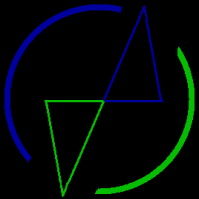
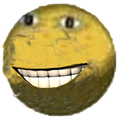

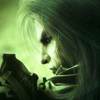


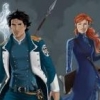
.jpg.6472fdc5897dc4579f5d611eebd4cd79.thumb.jpg.e85f1fc916f707bd145be44cd0f8f760.jpg)

